
Process to evaluation the performance and opportunity of the MVP launch
The very overarching question in all groups that presented as the core reason blocking users from uploading is:
“Is there a demand of what I am uploading to?”
“How’d they find my content?”
Two workshops are facilitated among team to diverge the solutions and converge the ideas:
A MECE method to brainstorm all the directions. Silent voting on the directions.
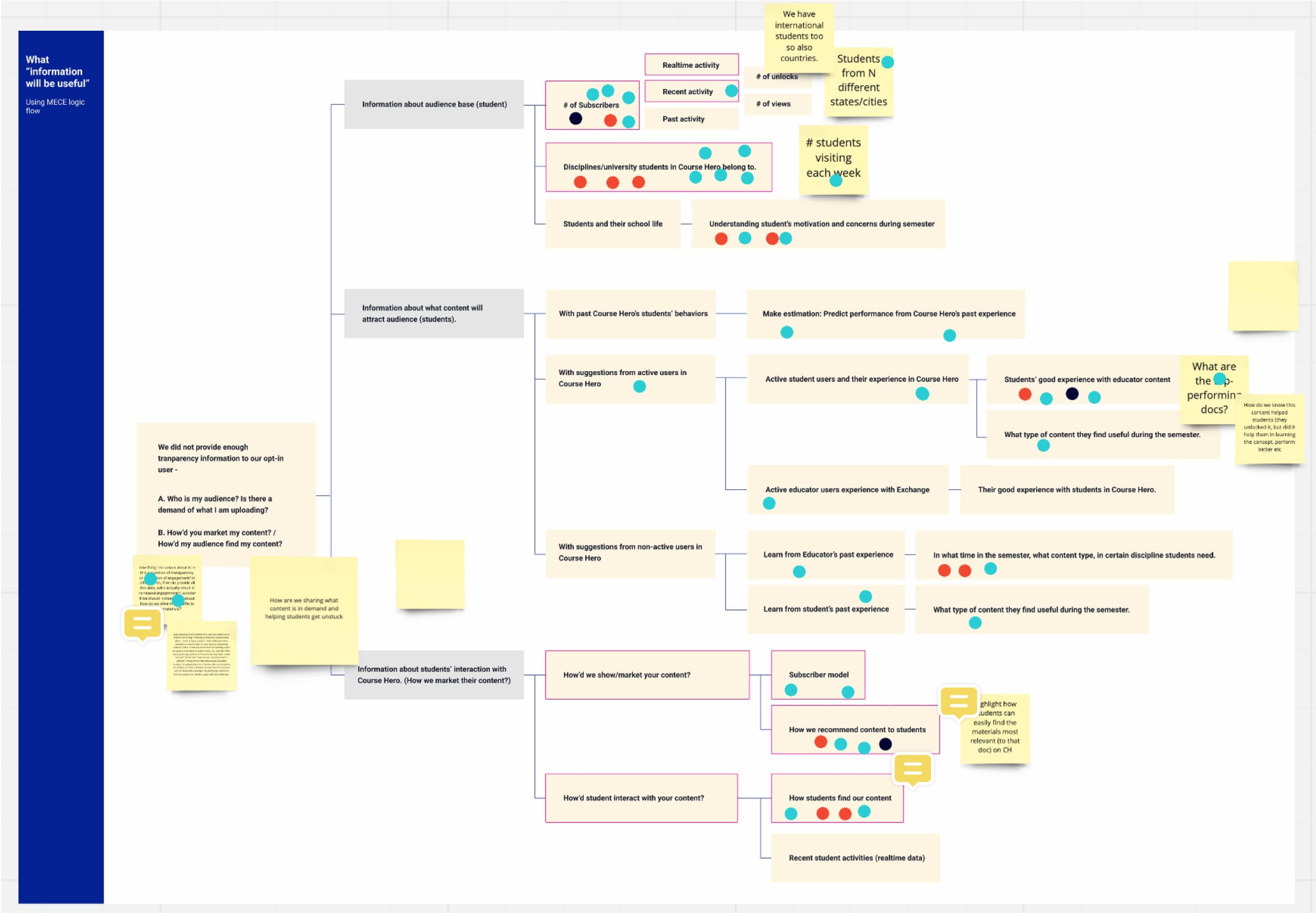
MECE method to brainstorm possibilities
Pulled the voted ideas into the effectiveness/feasibility diagram.
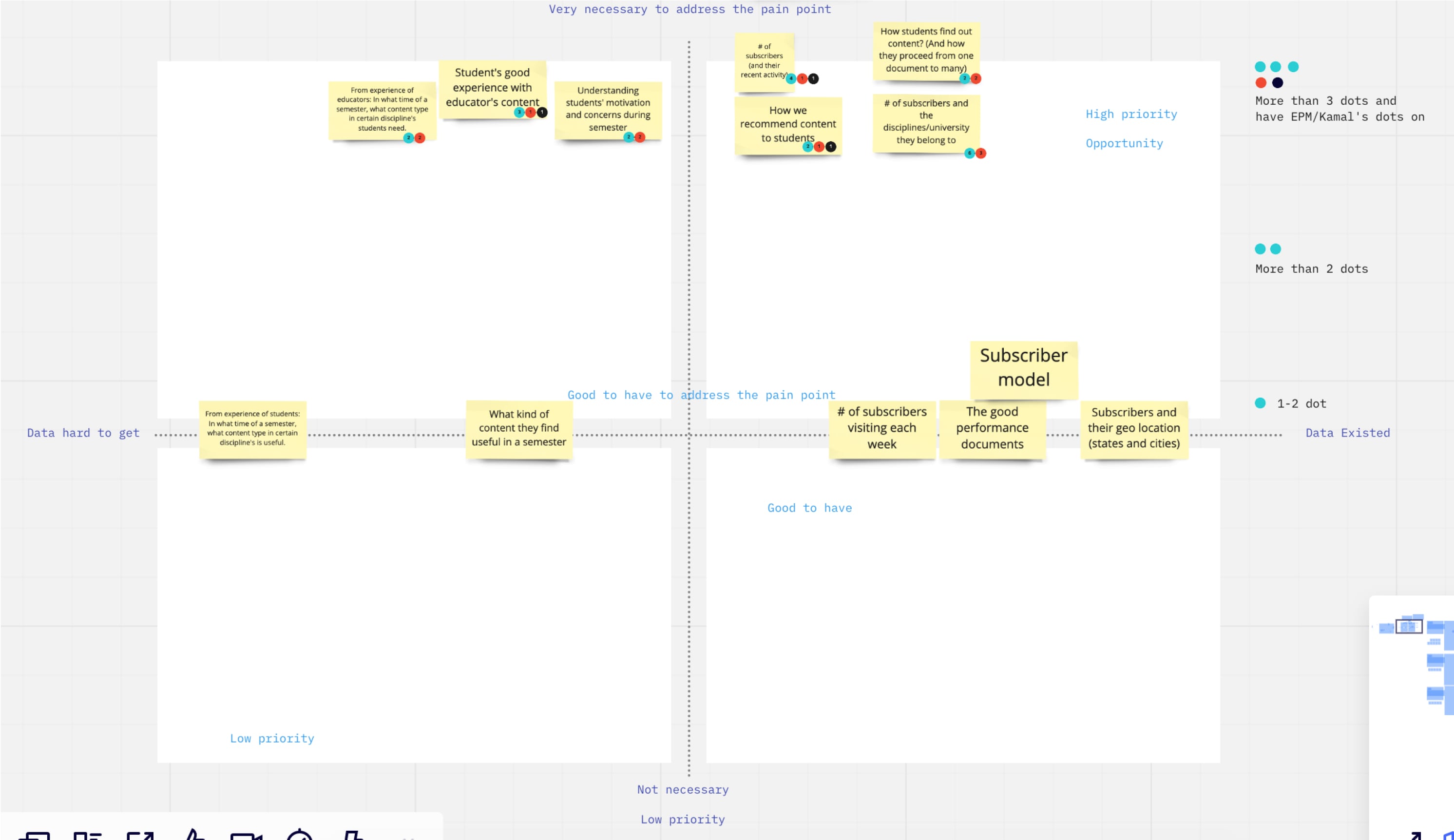
Effectiveness/feasibility diagram: Sort out ideas that maximize performance and minimize the implementation efforts
Translate the ideas into feature-phasing language.
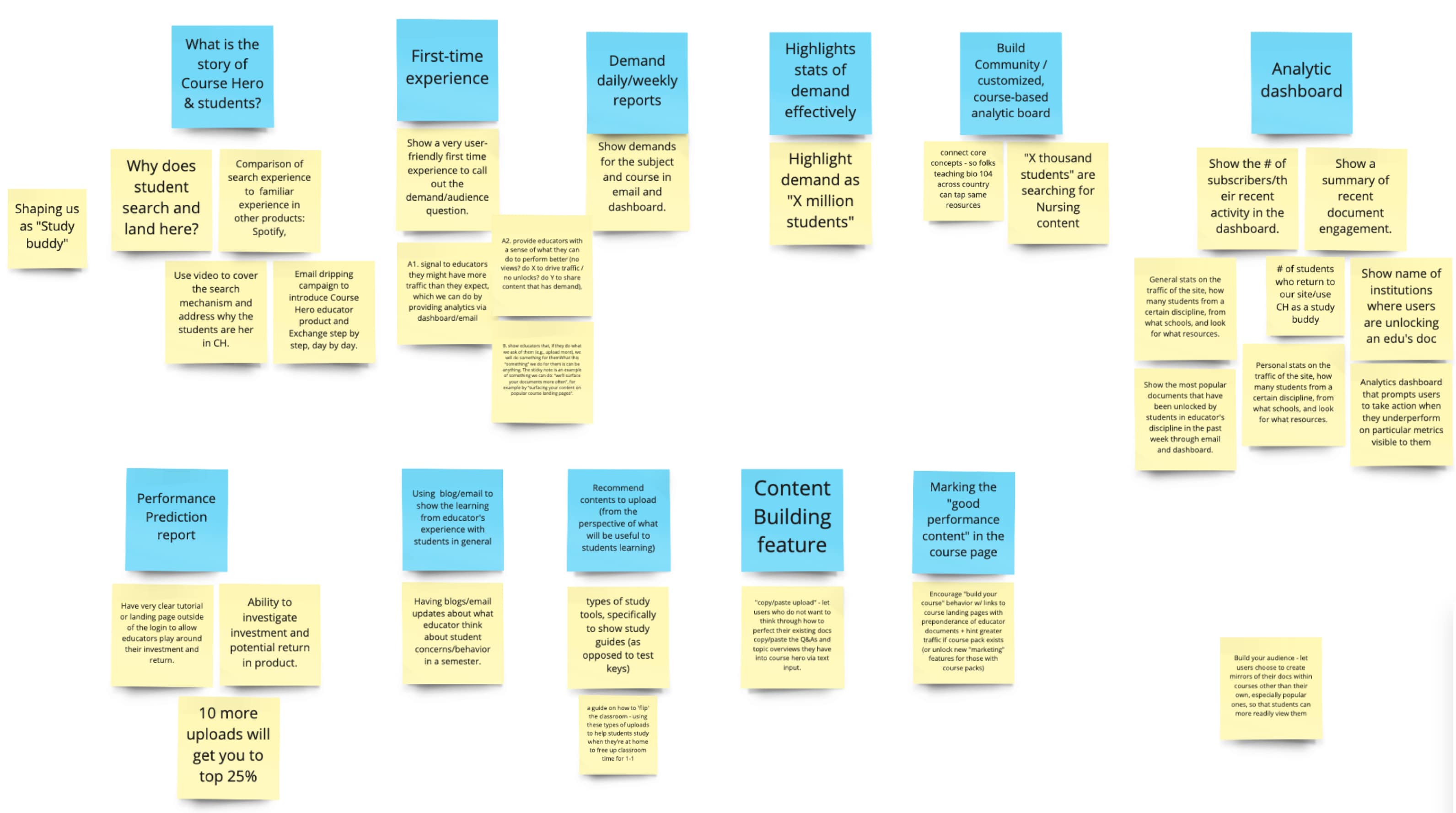
Feature brainstorming
7 features are settled as main design directions for testing.
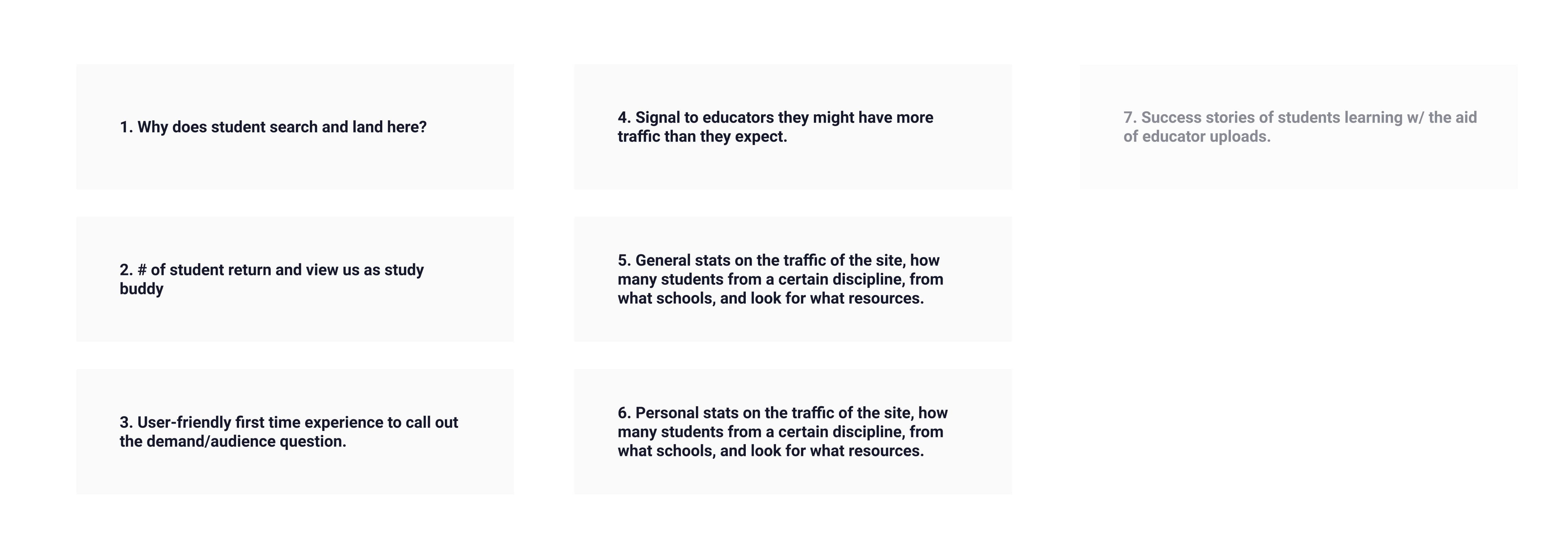
Main directions
Educator read contents, carefully. We have two design variations: one-page story telling and a explanatory widget in mind. (Blue outlined)
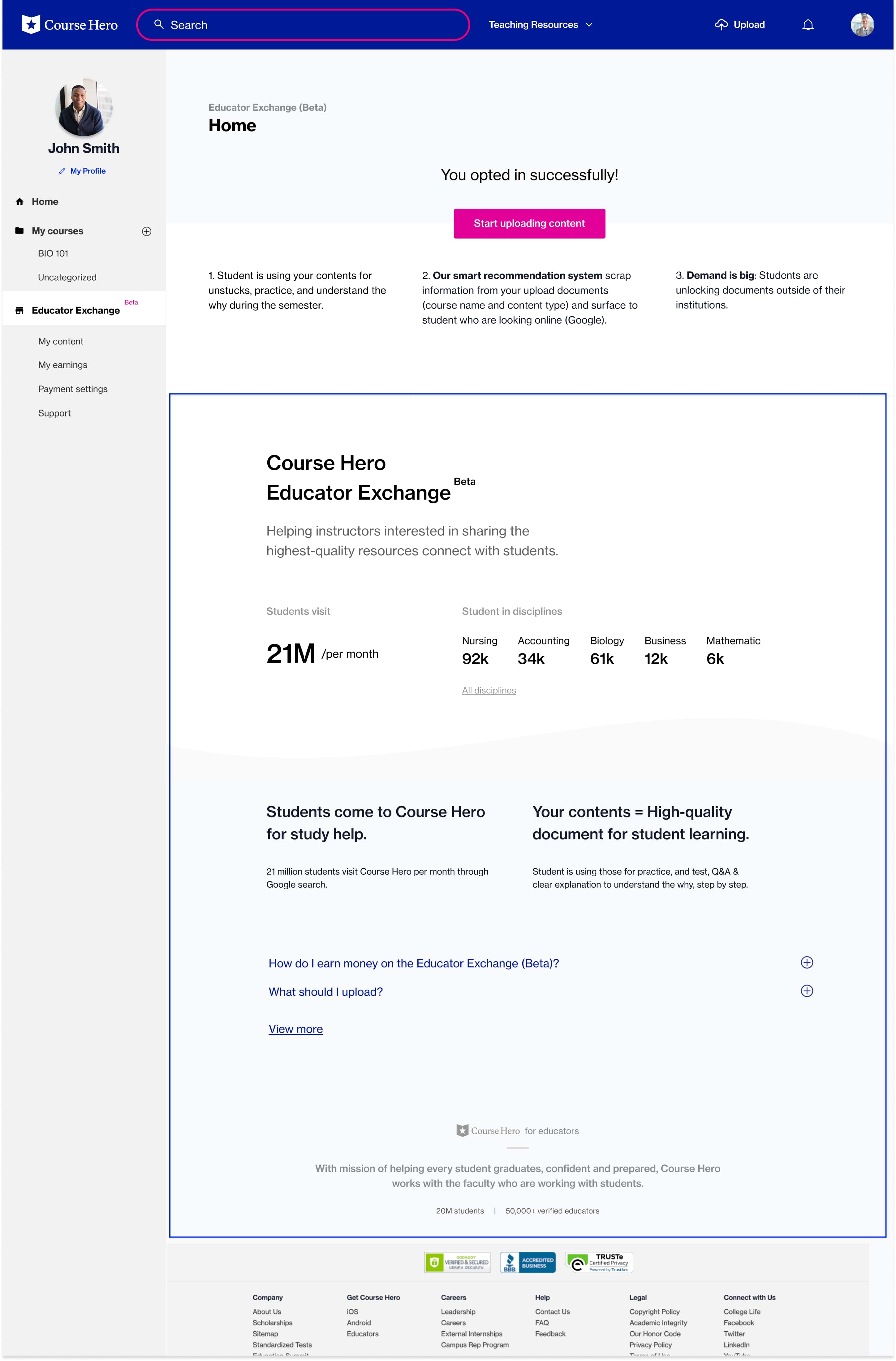
Variation 1: One-page story telling
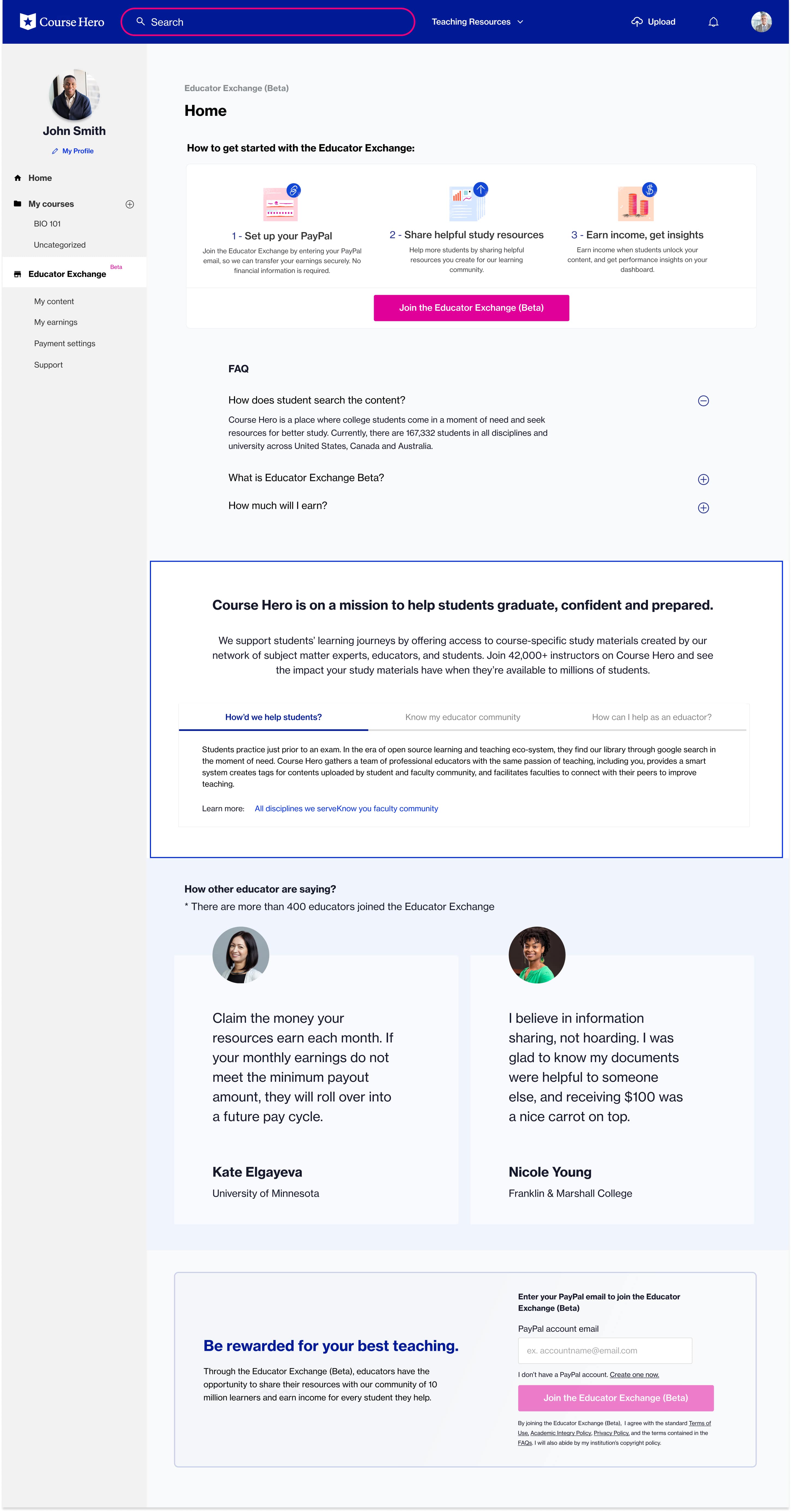
Variation 2: Explanatory widget
We observed that
Two variations are experimented: 1. minimal information presentation and 2. with evidence of testimonial.
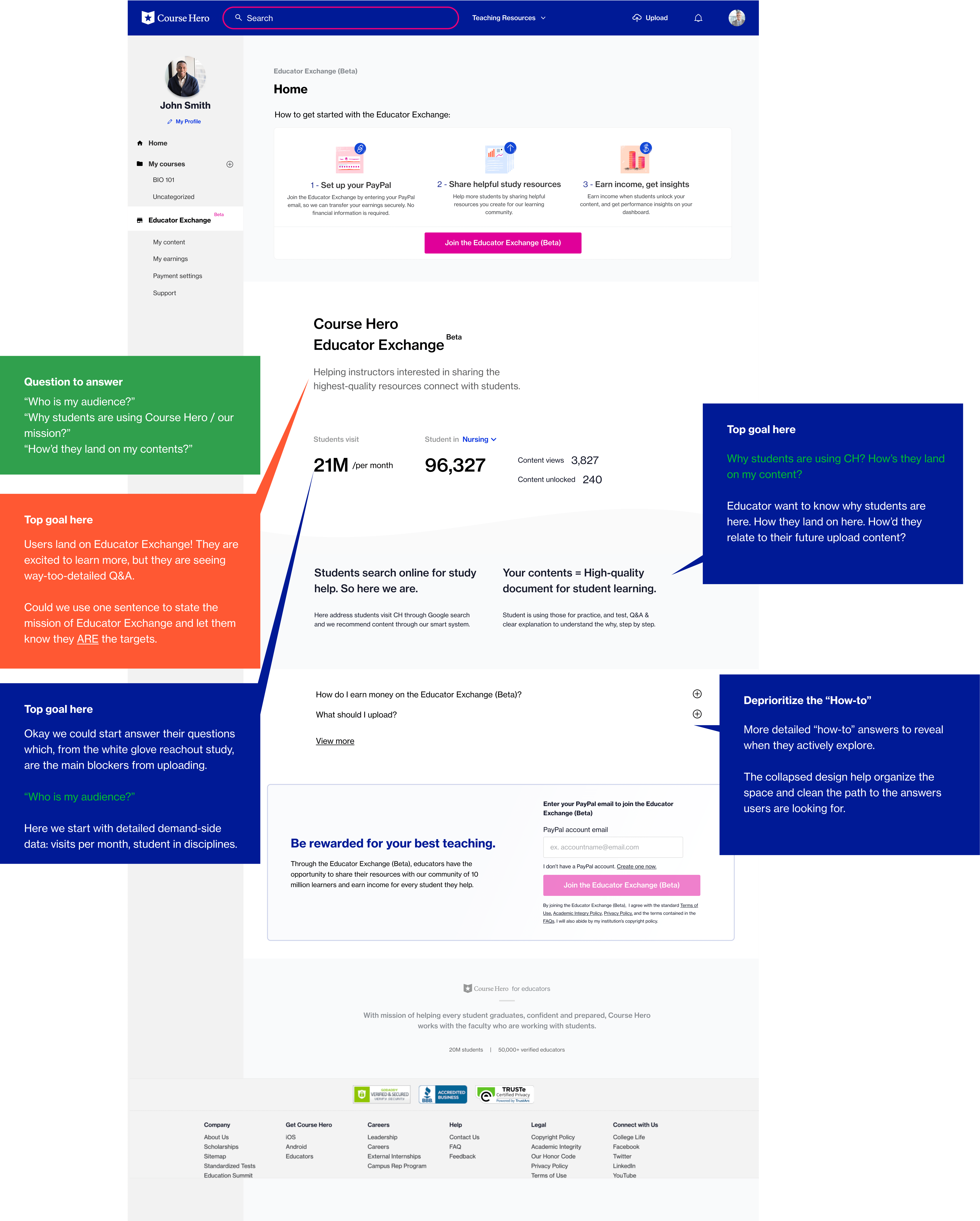
Variation 1: minimal information presentation
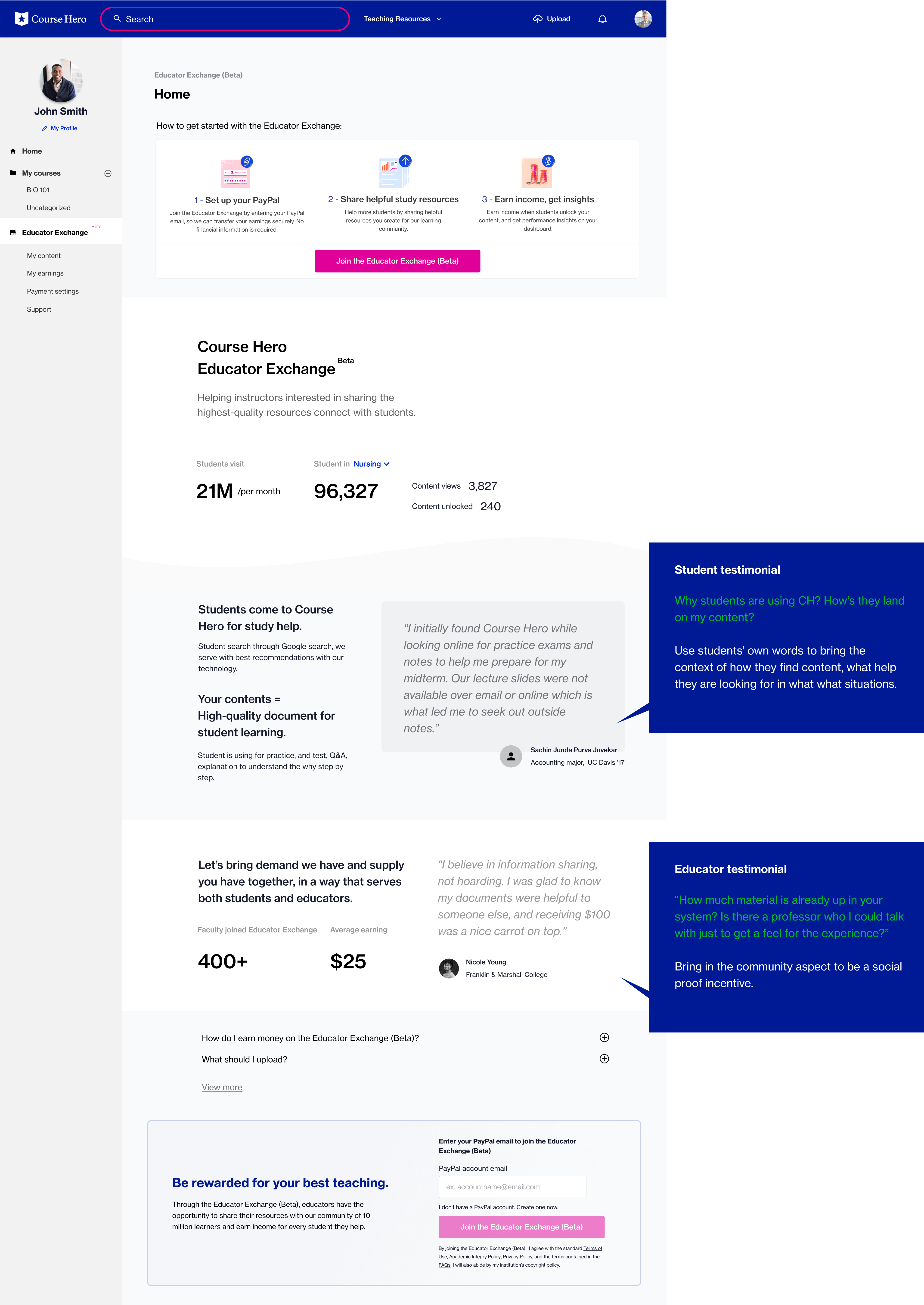
Variation 2: with student and educator testimonials as evidences
Design decision 1
Condensed the area of “What is Educator Exchange” within one section. (We observed users don’t want to read and don’t click video to understand.)
Design decision 2
Use real data to call out the audience and demand. We also further deprioritized the number of content by discipline in this version.
Design decision 3
Condensed the “how-to“ Questions to allow user to active explore what they want to read.
Design decision 4
Use a new footer design to connect Course Hero core mission and build trust: how’d your content will help students' learning?
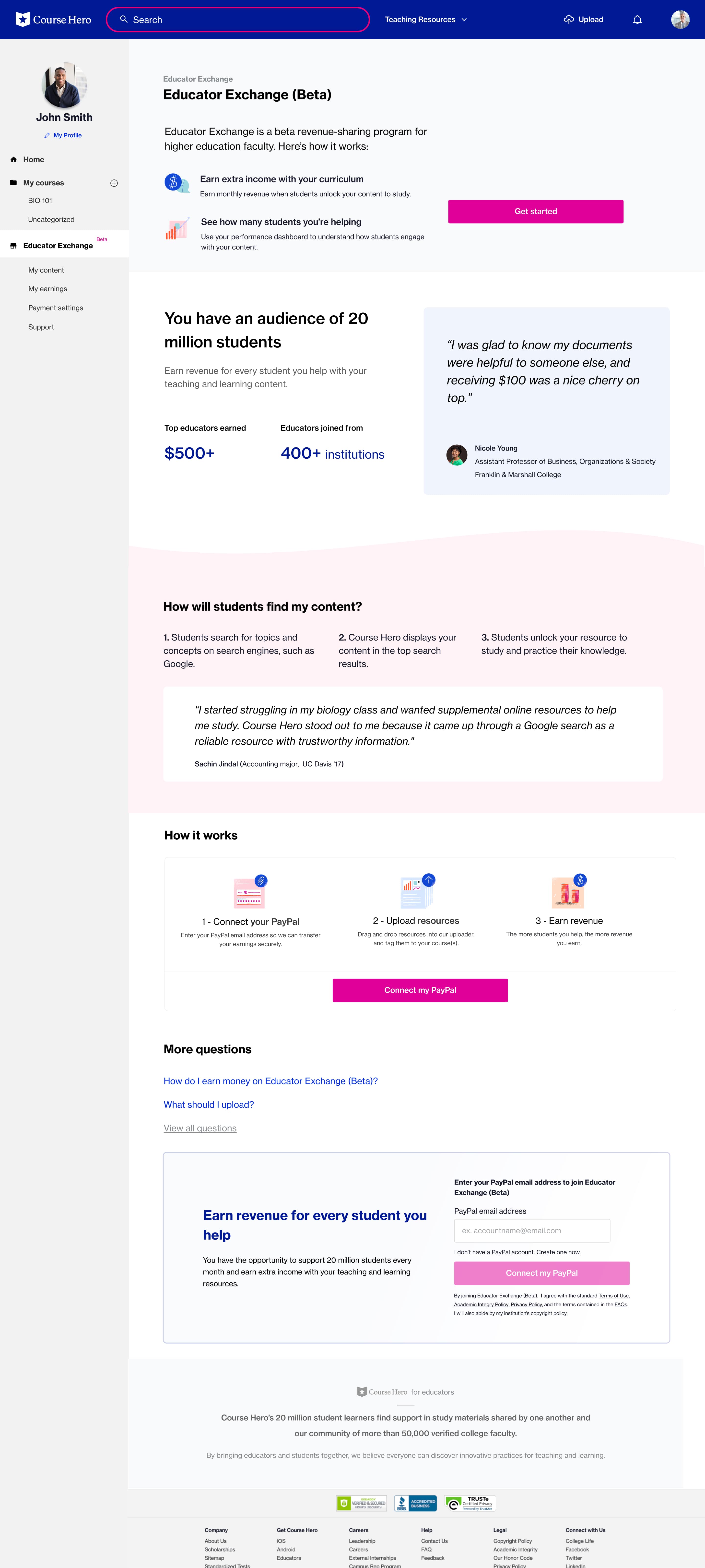
Final Design: In-product experience
Users responded with positive understanding of the mission of Course Hero, how'd that relate to the actions to take. Who's the demand (student audience). And how'd their action would contribute to a greater community.
By spending time understanding users' concerns and we believed: "Problem that we are solving is the right problem to solve." The constant presentation of data, user interviews, and visualization of the concern journey helped build a shared language among stakeholders' and align on the experiments to pursue.
The MECE method help stretching team's thinking muscles and help facilitate the co-designing energy, dialogue and diverge on the directions. More ideas bring to a better design result. It also provides us with a parking lot where future feature options are available.
While it is hard to see a significant result in numbers, the process provide a breathing space for reflecting on initiatives based on users' needs and concerns. As a designer, based on the experience, leading and organizing the research efforts successfully introduce the user mindset into the develop process.
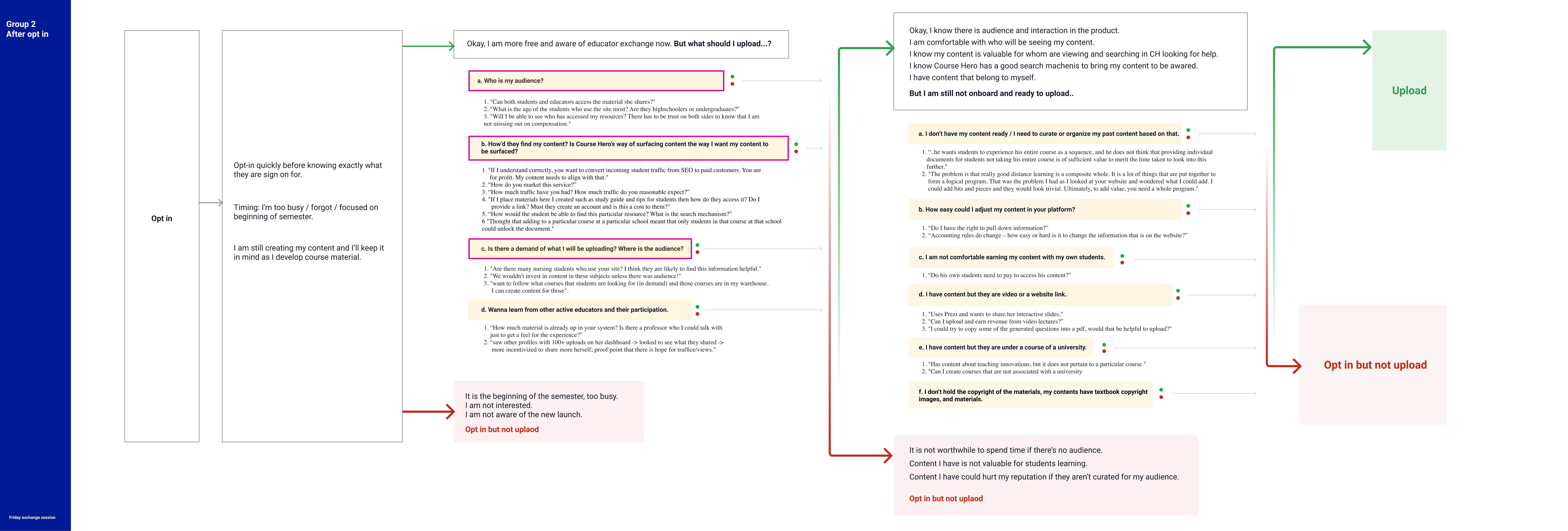
Lastly, "designing is planning". Communicate and propose a path to a successful result provides designer with product ownership. It also provides a leverage to improve the "user-engagement" elements within products.

Coded and designed by Muse, Copyright © 2021